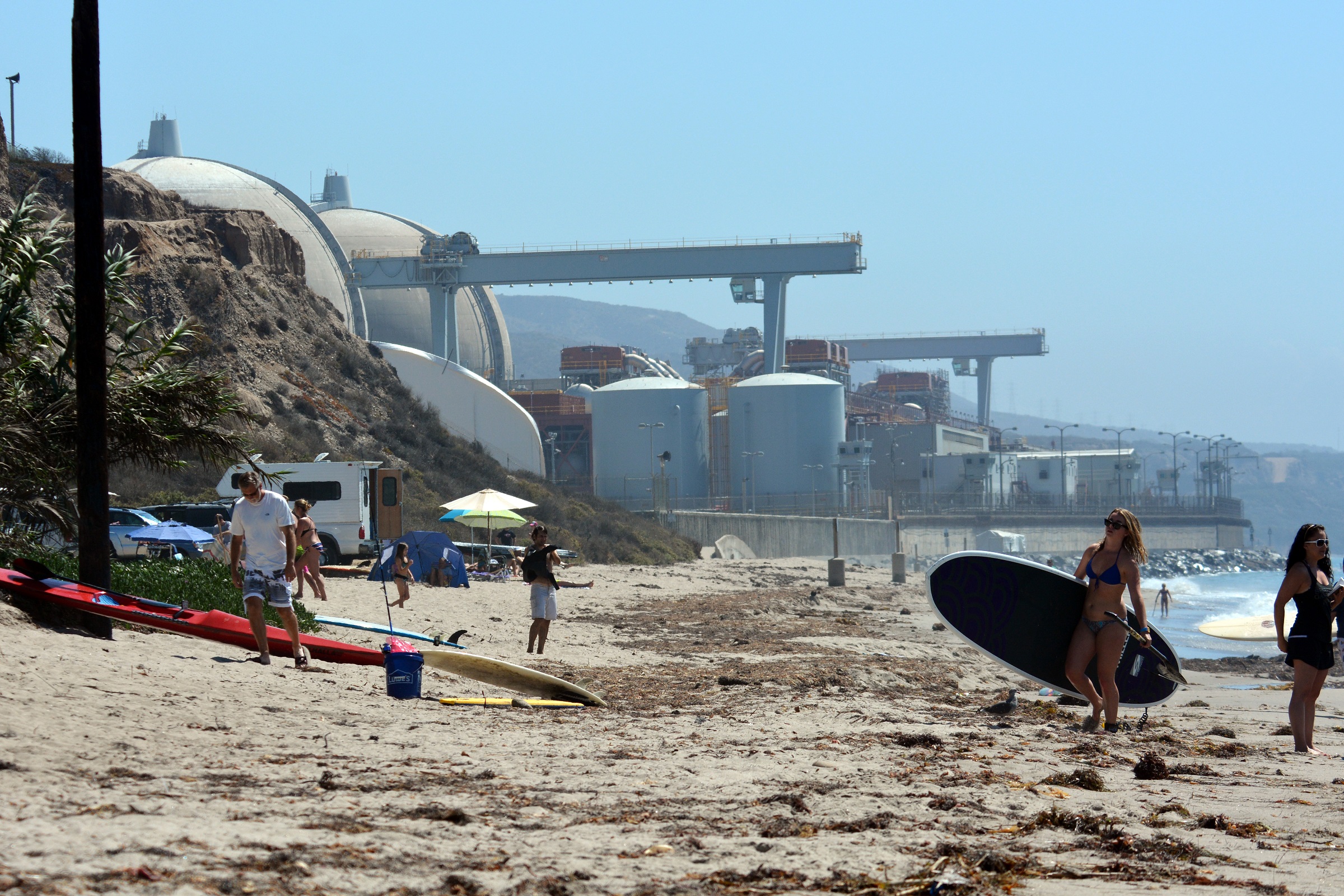The San Onofre Nuclear Generating Station near San Diego on the California coast was permanently shut down in 2013. Recently installed turbines from a Japanese manufacturer caused vibrations that damaged the steam pipes in the plant after only two years of operation. South California Edison decided to shut down the plant after the damage was discovered.
Eventually, the U.S. will have a permanent geological repository for spent nuclear fuel but not before 2050 at the soonest. Both critics of the plant and the operators agree that it is imperative to move the fuel out of the reactor and cooling pool as soon as possible. If there is a loss of cooling water in the pool, the fuel rods will spontaneously burst into flames and spread radioactive materials far beyond the plant.
The question of where to put the nuclear fuel in the reactor and the spent nuclear fuel in the cooling pool has aroused controversy and debate. SCE has proposed a location near the reactors on land that it owns on the coast to store the three million six hundred thousand pounds of nuclear fuel in temporary dry casks. The proposed storage site is on bluffs owned by SCE above the San Onofre State Beach just north of the site of the closed reactors. About a third of the spent nuclear fuel from the plant is already stored on the bluffs in casks. SCE proposes to place the other two thirds of the fuel in dry casks on the bluffs in 2017. The location is between San Diego and Los Angeles, two major metropolitan areas that are home to over seventeen million people.
Critics of the site proposed by SCE say that it is just about the worst possible choice for storing nuclear materials. The proposed storage site is in an area prone to earthquakes and tsunamis. Early this year there was significant erosion of the beach and cliffs near San Onofre. Global climate change is causing sea levels to rise and this will potentially increase the dangers of erosion of the beach and cliffs near the proposed storage site. The United States Geological Service says that there is a serious danger of extreme bluff, cliff and beach erosion which will increase over time. There is also an increasing risk of severe flooding in the area which can undercut coastal cliffs and cause them to collapse. The critics say that SCE chose the site because it was cheap and gave no serious consideration to the dangers to the people in the area.
SCE says that its analysis of the proposed site and weather conditions indicate that there is no serious danger that the bluffs where the nuclear fuel will be stored are in any danger of collapse. They say that the dry casks are well designed and can withstand the condition on the bluff with little risk for at least eighty years by which time they expect there to be a permanent national repository available to take the fuel.
One major concern of critics of the storage plan is the fact that the Nuclear Regulatory Commission has now issued exemptions to SCE that relieve it from being responsible to provide emergency response beyond the ground of the plant to any nuclear accident at the plant. The Federal Emergency Management Agency will no longer monitor the readiness of SCE to provide emergency response beyond the plant. This worries officials who will have to provide any emergency response to the area around the plant. The California Office of Emergency Services has requested that FEMA reconsider this policy but FEMA has refused.
San Onofre Nuclear Generating Station in 2013 as seen from San Onofre State, photo D Ramey Logan:
